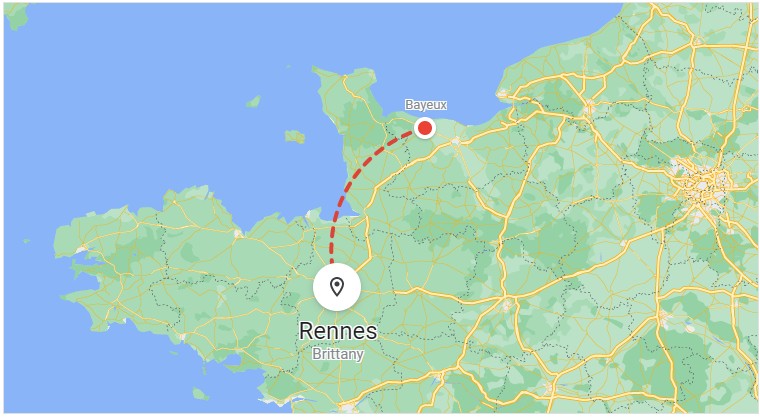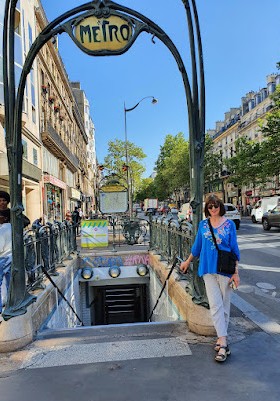As we had hoped and expected, Bayeux, didn't disappoint.
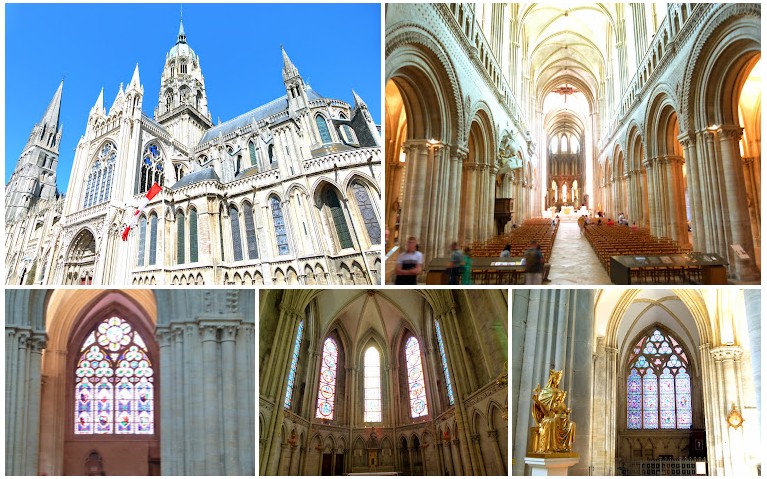
Bayeux is the final resting place of the famous tapestry that tells the story of the Norman Conquest of England.
It was in Bayeux Cathedral that Harold swore an oath, over a holy reliquary, to pass the English crown to William Duke of Normandy upon the death of Edward the Confessor, the presently prevailing warlord (King) in England.
Harold had no such intent. And was crowned king of the Saxons himself.
William took a dim view, raised an army of local lords and built an invasion fleet.

The famous tapestry recounts, in 58 panels, the betrayal, and other events, leading up to the battle of Hastings in October 1066. Thus, the Norman Conquest of England, Wales, Scotland and later, partially, of Ireland.
One is not allowed to take photos of the tapestry, although we did buy a replica of one panel that now hangs in our dining room - and we are free to photograph. The nearby picture is my oil painting of Wendy at Iguassu.
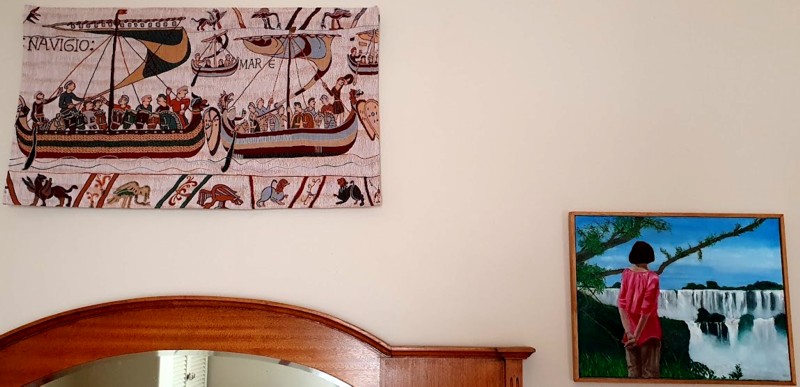
It's also reproduced online in full here: Scroll Across
It's obvious from the ships, shields and weapons depicted that both these warlords were latter-day, Christianised, Vikings.
Very interesting. Again, the history that led to you and me.
Having a suitable religion was important. It was held that, in order to govern them, the common people need a unifying religion, with traditions; pomp and circumstance; and of course, holidays (holy days).
But why did the Vikings adopt Christianity and not one of the other religions on offer?
We might go back to Vladimir the Great (another ex-Viking warlord) and the Christianisation of the Kievan Rus' (modern Russia) who is reported to have chosen between Judaism, Islam and Eastern Christianity, after summoning advocates from each.
Vlad is also said to have rejected the other two because he liked pork and to have a drink or three.
Yet a better answer is: that great Roman invention - The Divine Right of Kings.
In addition to the tapestry museum Bayeux has the 'Musee Baron Gerard' that incorporating part of the historic Episcopal palace of Bayeux that once administered 'justice'.

Now it's is the local art and history museum. In addition to a couple of 'impressionist masterpieces' and a few more traditional paintings, it has a great deal of Bayeux porcelain and lace. There were also some archaeological and ethnographic pieces (including a mummy and a cat mummy). It was worth the visit.
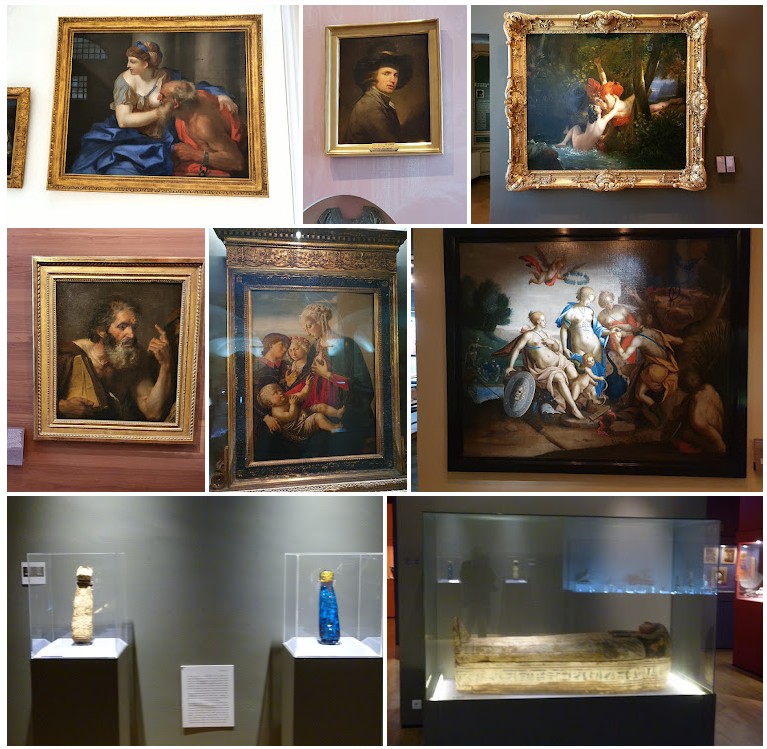
The city of Bayeux is remarkable in other ways. Among these is that it came through two world wars almost unscathed, despite or because (of) being overrun by the British on day two of the D-Day Normandy landings.
The museum to the landings is here.
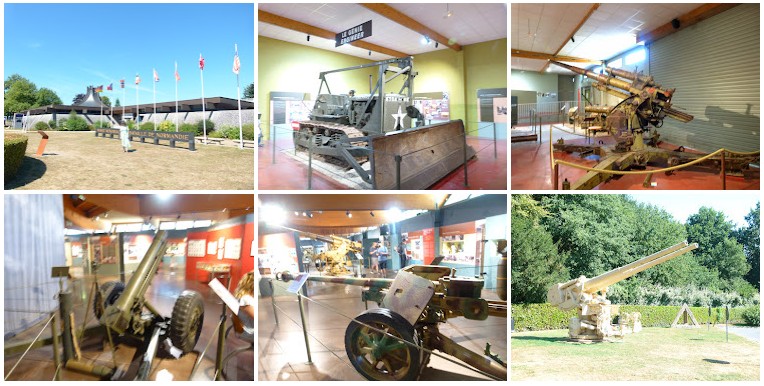
Leaving the coast, we now looped inland, through the pretty countryside of Brittany to Rennes.
Our overall impression of Normandy had been of a prosperous and pleasant part of the world in which the recent pandemic was rapidly becoming a faded memory.
